
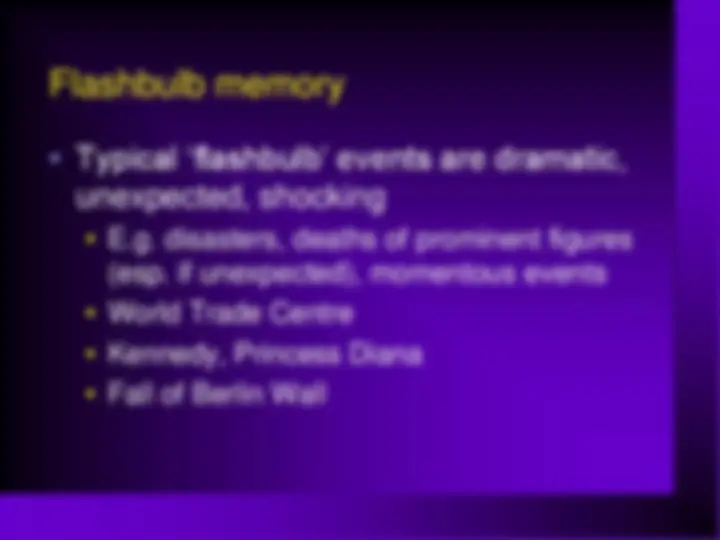
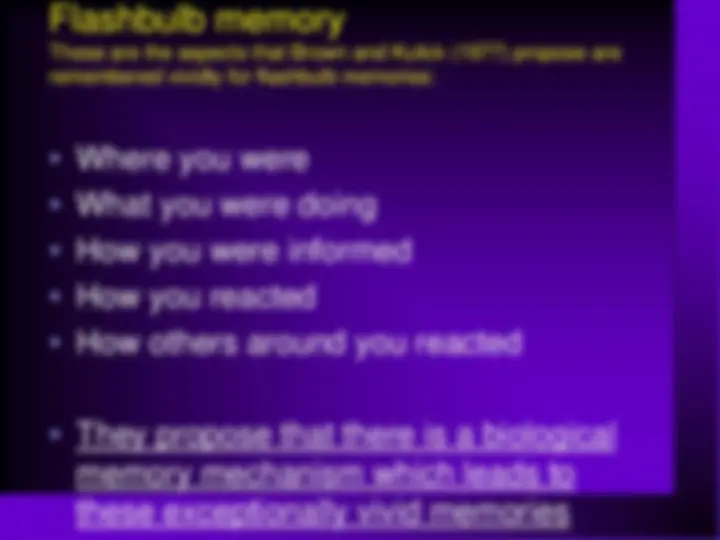
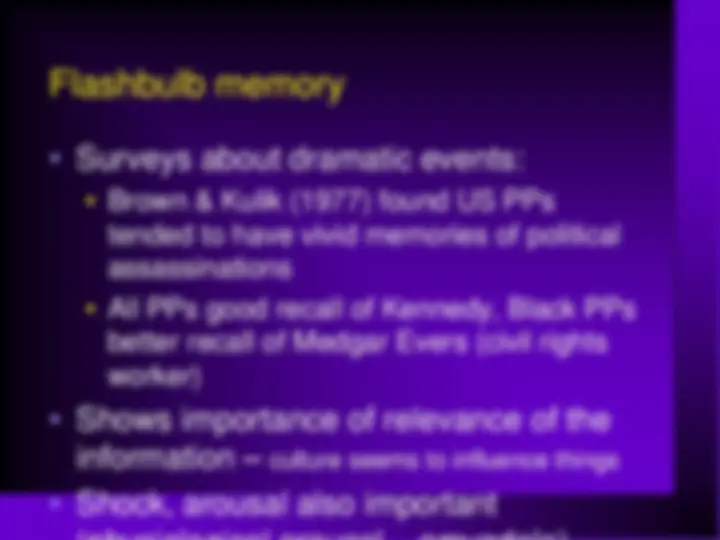
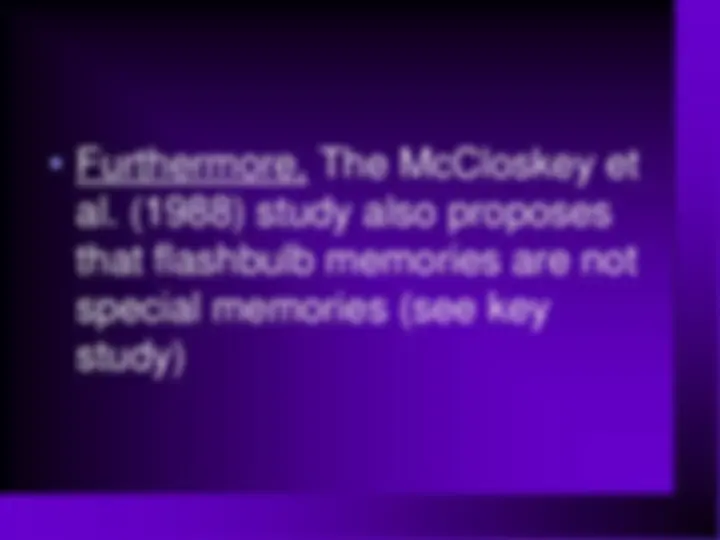
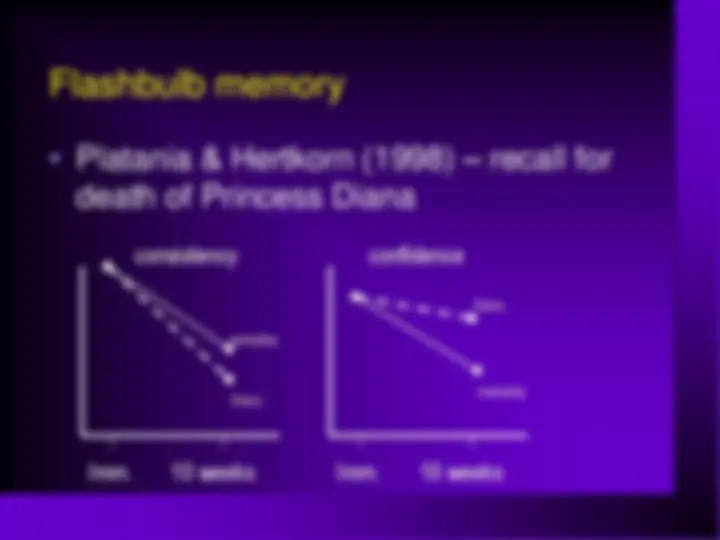
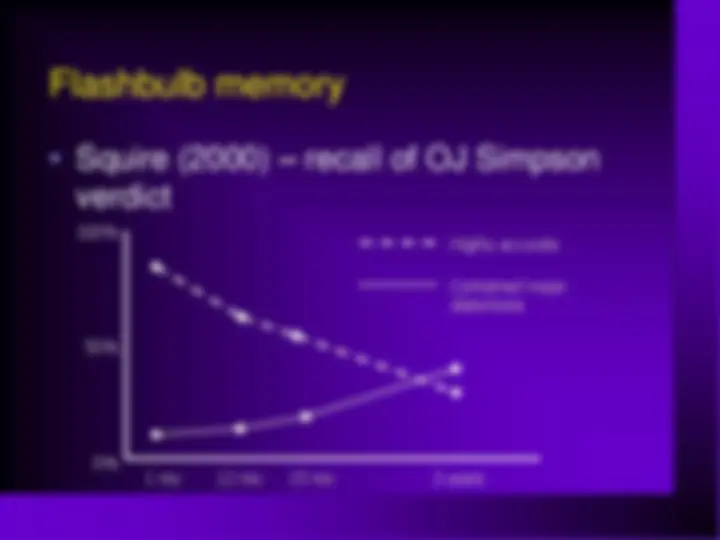


Study with the several resources on Docsity

Earn points by helping other students or get them with a premium plan


Prepare for your exams
Study with the several resources on Docsity

Earn points to download
Earn points by helping other students or get them with a premium plan
Community
Ask the community for help and clear up your study doubts
Discover the best universities in your country according to Docsity users
Free resources
Download our free guides on studying techniques, anxiety management strategies, and thesis advice from Docsity tutors
The Flashbulb Memory theory, which explains how emotions influence the formation and retention of vivid memories of significant, emotionally charged events. Originally described by Brown and Kulik (1977), flashbulb memories are characterized by their exceptional vividness and resistance to forgetting over time. the typical characteristics of flashbulb memories, the biological mechanisms behind them, and the debates surrounding their distinctiveness from other memories.
What you will learn
Typology: Slides
1 / 11

This page cannot be seen from the preview
Don't miss anything!







IB Syllabus Says: Evaluate one theory of how emotion may affect one cognitive process (i.e. How flashbulb memory theory explains the influence of emotion on memory )
These are the aspects that Brown and Kulick (1977) propose are remembered vividly for flashbulb memories:
100%
50%
0% (^) 1 mo 12 mo 15 mo 3 years
Highly accurate Contained major distortions
Flashbulb memories